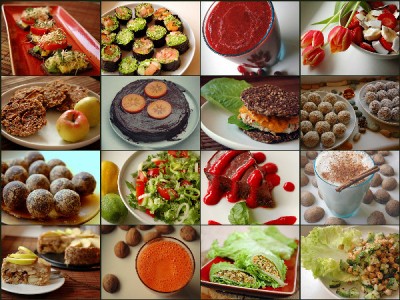Due to this tolerance that the body develops to certain food that are harmful, in order to experience if a certain food is really good or bad for us, it could be a good idea to avoid eating it during a certain time. The length of time is the necessary amount until the body looses its apparent “tolerance” to it. Then it must be reintroduced again.
When removing a harmful food it is possible that the person feels better or worse, depending on several factors. But in the reintroduction, it is the moment when the person will feel a worsening, which could happen in some hours or even in some days after the reintroduction started.
Taking into account the following list of possible links, we can be aware and make the relationship between disease and food easily.
I have got this information from my experience as nutritionist. Some links are known by most nutritionists, but most of them are the fruit of my observations, and they are new contributions.
After reading this list you may ask yourself: then, what can we eat? I think that our best food are fruits and vegetables, knowing that they can have some undesirable effects too, although the repercussion is much lower compared with the other food. For example, citrus may be excessively laxative and result in some muscular pain and fatigue, as well as tomate and bell peeper; and vegetables are quite diuretic.
When removing a harmful food it is possible that the person feels better or worse, depending on several factors. But in the reintroduction, it is the moment when the person will feel a worsening, which could happen in some hours or even in some days after the reintroduction started.
Taking into account the following list of possible links, we can be aware and make the relationship between disease and food easily.
I have got this information from my experience as nutritionist. Some links are known by most nutritionists, but most of them are the fruit of my observations, and they are new contributions.
| Diseases | Food |
| Breast cancer | soy (when it is removed from the diet after it has been taken during several years) |
| Osteoporosis | dairy, meat, fish, grains |
| Cardiovascular diseases | fats and oils |
| Nervousness, insomnia, tachycardia | coffee, tea, chocolate |
| Constipation | gluten, carrot, rice, fish. In lesser degree: meat, green leafs |
| Laxative | avocado, citric fruits, fats, dried fruits |
| Circulatory problems, cold sensitive, Raynaud syndrome | fast carbs (sugar, syrup, honey, dried fruit) and slow carbs (starch) |
| Brittle nails | fast carbs (sugar, syrup, honey, dried fruit) and slow carbs (starch) |
| Nightmares | nuts, seeds, grains, seeds, dairy |
| Premenstrual syndrome | eggs, nuts, seeds, grains, dairy, meat, fish |
| Lack of memory, mental sluggishness | meat, fish |
| Fatigue and/or muscular pain | tomato, bell peeper, citric fruits, kiwi, pineapple |
| Diuretics | vegetables |
| Somnolence, fatigue, bags under the eyes | alcohol, dairy, meat, fish. In lesser degree: green leafs, salt |
| Headaches | dairy, smoked products, alcohol, coffee (withdrawal effect). In lesser degree: salt |
| Leg pain | eggs |
| Dermatological diseases | oils, avocado, coconut, olives, nuts, seeds |
| Liver inflammation | dairy, chocolate, fats, alcohol, banana |
| Muscular cramps | sugar, syrup, honey, dried fruit, excess of fruit |
| Ophthalmological diseases, conjunctivitis | sugar, syrup, honey, dried fruit |
| Joint disorders | fats and oils |
| Hemorrhoids | fats and oils |
| Intestinal worms | sugar and syrups |
| Gastrointestinal diseases | gluten, dairy, legumes |
| Kidney diseases | teas and infusions |
| Heart diseases | drugs |
After reading this list you may ask yourself: then, what can we eat? I think that our best food are fruits and vegetables, knowing that they can have some undesirable effects too, although the repercussion is much lower compared with the other food. For example, citrus may be excessively laxative and result in some muscular pain and fatigue, as well as tomate and bell peeper; and vegetables are quite diuretic.













